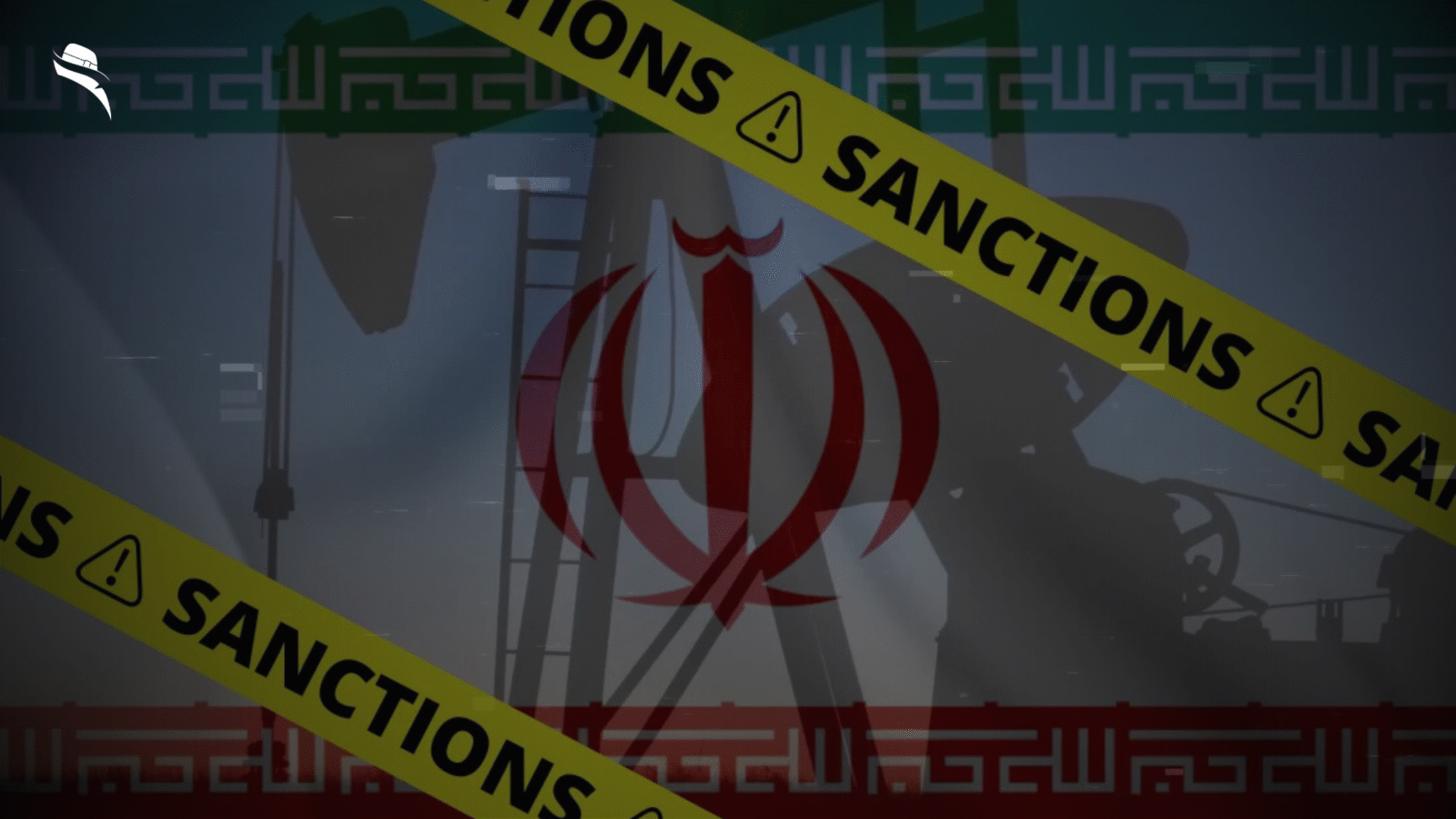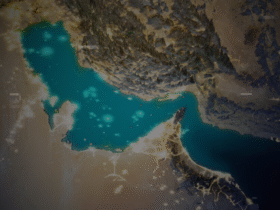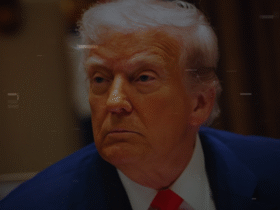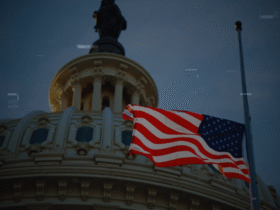Iran sanctions imposed by the United States in 2018 triggered a devastating economic decline, plunging the country’s GDP growth from a robust 8.8% in 2016 to minus 2.25% in 2018 and further down to minus 2.65% in 2019. This dramatic reversal represents one of the most severe economic contractions caused by international restrictions in recent history. Despite their intended diplomatic pressure, these sanctions have created widespread economic suffering for ordinary citizens.
Economic sanctions on Iran rank among the world’s most stringent, affecting multiple sectors from oil exports to banking relationships. Why is Iran sanctioned? The restrictions primarily target nuclear proliferation concerns, terrorism financing, and human rights issues. However, the humanitarian consequences have been severe. Consequently, the Iranian rial has depreciated significantly, inflation soared to 41% in 2019 (the sixth highest globally), and almost half the population now lives on less than $10 per day. Furthermore, critical medicine shortages affect millions of Iranians, including those needing epilepsy and cancer treatments, revealing the complex and far-reaching impacts of these international measures.
The Evolution of Iran Sanctions
“After two years of negotiations, we have achieved a detailed arrangement that permanently prohibits Iran from obtaining a nuclear weapon.” — Barack Obama, 44th President of the United States
Sanctions against Iran trace back to 1979, when the United States first imposed economic restrictions following the seizure of the American Embassy in Tehran. These early measures froze [approximately $12 billion in Iranian assets](https://www.atlanticcouncil.org/blogs/new-atlanticist/a-brief-history-of-sanctions-on-iran/). Additional sanctions followed in 1984 when the US officially designated Iran as a state sponsor of terrorism, triggering a host of restrictions including bans on arms transfers and export controls for dual-use items.
Early sanctions and nuclear concerns
The discovery of undeclared nuclear facilities in Iran during the early 2000s prompted international action. By 2006, Iran had announced it had enriched uranium to 3.6%, leading the UN Security Council to adopt Resolution 1696—the first legally binding demand for Iran to suspend its enrichment program. Subsequently, multiple rounds of increasingly severe sanctions were imposed, targeting Iran’s access to nuclear-related materials and placing economic pressure on the Iranian government.
The JCPOA and its short-lived relief
A breakthrough came in November 2013 with the Joint Plan of Action (JPA), an interim agreement that provided limited sanctions relief and access to $4.2 billion in previously frozen assets in exchange for restricting Iran’s uranium enrichment and allowing international inspections. This paved the way for the more comprehensive Joint Comprehensive Plan of Action (JCPOA) in July 2015.
Under the JCPOA, Iran agreed to significant limitations on its nuclear program, while the P5+1 (China, France, Germany, Russia, the United Kingdom, and the United States) committed to providing phased sanctions relief. On January 16, 2016, known as “Implementation Day,” the International Atomic Energy Agency (IAEA) verified Iran had met its preliminary commitments. In response, the United States lifted nuclear-related secondary sanctions, primarily on Iran’s oil sector, allowing the country to increase exports to nearly pre-sanctions levels. Moreover, approximately $100 billion worth of frozen Iranian assets were unfrozen.
The Trump administration and ‘maximum pressure’
The JCPOA’s relief proved short-lived. In May 2018, President Trump withdrew the United States from the agreement, citing its failure to address Iran’s ballistic missile program and regional proxy warfare. By November 2018, the US had reinstated sanctions, which were further expanded in 2019 and 2020 to cover Iran’s financial sector.
Trump’s “maximum pressure” campaign specifically targeted Iran’s oil exports—a crucial source of revenue. Initially, temporary waivers allowed some countries to continue importing reduced amounts of oil from Iran until 2019. As these waivers expired, Iranian oil exports, which had brought in $53 billion in 2023 and $54 billion in 2022, became primary targets.
Recent developments post-2020
In response to mounting pressure, Iran progressively reduced its compliance with the JCPOA. By January 2020, Tehran announced it would no longer observe any limits set by the agreement. While the Biden administration initially sought to restore the deal, negotiations ultimately stalled despite coming close to an agreement in summer 2022.
In February 2025, President Trump, having returned to office, signed National Security Presidential Memorandum 2 (NSPM-2), officially restoring the “maximum pressure” campaign. This directive instructs the Treasury Secretary to impose “maximum economic pressure” on Iran and orders a campaign aimed at driving Iran’s oil exports to zero. Additionally, the memorandum calls for working with allies to complete the “snapback” of international sanctions on Iran.
Macroeconomic Fallout: GDP, Inflation, and Currency
“The immediate impacts of sanctions on the Iranian economy are apparent–oil production and GDP growth are collapsing, Iran’s currency is weakening, and inflation is picking up.” — Frank Verrastro, Senior Vice President and Trustee Fellow, Center for Strategic and International Studies (CSIS)
The economic effects of sanctions on Iran have resulted in measurable macroeconomic damage across multiple indicators, revealing the deep vulnerabilities of an oil-dependent economy under international restrictions.
GDP contraction and oil dependency
Economic sanctions triggered dramatic GDP declines in two consecutive years—minus 2.25% in 2018 and minus 2.65% in 2019. The industrial sector bore the heaviest burden, experiencing a 9.1% decrease in value added in 2018, followed by another 9.7% decline in 2019. In contrast, agriculture showed resilience with a 9.2% increase in 2019 after an initial 2.4% decline. According to academic studies, Iran’s GDP was 12 to 19 percentage points lower than projections where sanctions had never been imposed.
The contraction particularly affected the oil-dominated economy, where petroleum exports traditionally fund government operations. Prior to sanctions, Iran’s projected economic growth was an ambitious 8% annually. Instead, the country experienced what the World Bank termed “a decade-long stagnation”. Indeed, by 2020, Iran’s GDP had shrunk to roughly a third of its 2012 value.
Inflation trends and consumer price index
Inflation represents one of the most devastating consequences of Iran sanctions. The annual change in the consumer price index, which remained in single digits during the JCPOA period (7.2% in 2016 and 9.6% in 2017), skyrocketed to 43% by 2021. As of 2022, the inflation rate of 42.4% placed Iran tenth globally for rising prices.
Food inflation has proven particularly severe, affecting vulnerable populations disproportionately. While food inflation was merely 6.5% in 2016, it reached 58.6% in 2022, putting Iran seventh worldwide. Notably, the bottom quintile of Iranian households spent 45% of their budget on food in 2020-21, compared to 26% for the top quintile. This demonstrates how sanctions-induced inflation has widened economic disparities within Iranian society.
The devaluation of the Iranian rial
Perhaps no economic indicator reveals the impact of sanctions more clearly than currency devaluation. The rial traded at approximately 32,000 to the dollar at the time of the 2015 nuclear deal. By February 2025, it had plummeted to an unprecedented 892,500 to the dollar, representing a loss of over 90% of its value since Trump’s initial “maximum pressure” sanctions in 2018.
The rial’s collapse continues unabated in 2025, with recent reports showing it falling to 1,043,000 to the dollar as of the Persian New Year. This represents a 75% devaluation from the same period in 2024. The currency crisis has prompted Iranians to protect their savings by purchasing dollars, other hard currencies, gold, and increasingly, cryptocurrencies.
Black market exchange rates and mis-invoicing
In response to currency pressures, Iran implemented a dual exchange rate system. The government reserved subsidized official rates for essential imports like food and medicine, while applying higher free market rates for other transactions. This policy created substantial black market premiums—the gap between official and free exchange rates—which grew from less than 1% between 2002-2009 to 112% by 2012.
The widening exchange rate gap created perverse incentives. First, it increased “mis-invoicing” of foreign trade documents and illicit trade. Second, research indicates the black market premium contributed to expanding Iran’s shadow economy, creating new avenues for corruption. Thus, sanctions not only damaged legitimate economic activity but also inadvertently strengthened alternative economic systems operating outside official channels.
Sectoral Breakdown: Who Bears the Brunt?
While sanctions affect Iran’s entire economy, certain sectors face disproportionate impacts. A closer examination reveals dramatic disparities in how different industries weather these restrictions.
Oil and gas exports under pressure
The cornerstone of Iran’s economy has suffered devastating blows under sanctions. Oil exports plummeted from approximately 2.5 million barrels per day in 2017 to less than 0.4 million barrels per day in 2020. China remains Iran’s primary customer, purchasing roughly 90% of Iran’s oil exports. Even with this lifeline, Iranian oil production fell from 3.8 million barrels daily before sanctions to between 2.3-2.7 million barrels. This reduction slashed oil revenues by approximately 50% within just one year after EU’s oil trade embargo.
Manufacturing and industrial slowdown
Iranian manufacturing demonstrates a complex pattern of both devastation and adaptation. The automotive sector illustrates the damage clearly—production dropped from 1.5 million vehicles in 2017 to just 1.2 million after sanctions intensified. Meanwhile, some industries have capitalized on sanctions-induced import substitution. The home appliances sector, once dominated by foreign brands (Korean manufacturers held 65% of the refrigerator market and 77% of washing machine sales in 2017), transformed dramatically. By 2022, domestic production of refrigerators doubled to 2.7 million units, while washing machine production increased from 900,000 to 1.6 million units.
Healthcare and pharmaceutical shortages
Perhaps the most troubling impact occurs in healthcare, where sanctions ostensibly include humanitarian exemptions. In reality, broad banking restrictions have severely constrained Iran’s ability to finance medical imports. Critical drug shortages now affect millions, including those with epilepsy, cancer, and epidermolysis bullosa (EB). For EB patients, inability to access specialized bandages has increased risk of bacterial infections and joint fusion. Reports indicate as many as 300 types of drugs are in short supply, while approximately 100 are entirely unavailable. Drug prices have skyrocketed, with increases ranging from 15% to over 150%, making treatment unaffordable for many Iranians.
Agriculture and domestic services resilience
Amidst widespread economic damage, agriculture demonstrates remarkable resilience. Unlike manufacturing, which contracted sharply under sanctions, agricultural production has maintained stability or even shown growth. This endurance stems partly from domestic focus and reduced import dependency. Nevertheless, food security remains threatened as food price inflation reached 59.2% in August 2020. The percentage of food-insecure households increased from 8.84% to 11.2% in urban areas and from 25.17% to 29.2% in rural regions between 2017 and 2019. Overall, sanctions have forced a reorientation toward domestic production and self-sufficiency, creating winners and losers across Iran’s economic landscape.
Social Costs: Poverty, Unemployment, and Inequality
Beyond economic indicators, sanctions against Iran have inflicted profound social costs across Iranian society, creating ripples of hardship that affect the most vulnerable populations disproportionately.
Youth and female unemployment rates
The labor market tells a troubling story of gender disparity. Although Iranian women have achieved remarkable educational gains—increasing their higher education participation by over 500% in recent years—female employment remains critically low. The overall unemployment rate hovers around 11%, yet youth unemployment exceeds 20%, creating a generation of educated but jobless young Iranians. Women face particularly severe barriers, as they are typically the first to be laid off during economic contractions resulting from economic sanctions on Iran. The regime has actively pushed women back into traditional domestic roles through campaigns emphasizing housework rather than outside employment.
Shrinking middle class and rising poverty
The Iranian middle class, once the backbone of the country’s socioeconomic structure, has eroded dramatically. Since the intensification of sanctions in 2011, this demographic has contracted from 58.4% of the population to 48.8% by 2019. At present, the middle class represents merely 35% of Iranians and continues to shrink as inflation soars. This contraction translates to approximately 8 million people falling from the middle class into the lower middle-class strata. Simultaneously, poverty rates have doubled in rural areas and increased by 60% in urban regions since 2010.
Income inequality and the Gini index
As sanctions have tightened, inequality has widened considerably. By 2020, the top 5% of Iranian households captured 35% of total expenditures. Research indicates sanctions have increased the Gini coefficient—a measure of inequality—in the long term. This growing disparity stems from structural transformation in Iran’s economy under sanctions, which has entrenched elite power while eroding middle-class wealth.
Access to food and medicine
Everyday survival has become increasingly challenging. Monthly consumption of essential foods has plummeted—red meat consumption dropped by 51.6%, milk by 35.3%, and rice by 34.7% between 2011 and 2019. In healthcare, sanctions have created critical shortages despite humanitarian exemptions. Even specialized bandages for rare conditions like epidermolysis bullosa have become unavailable due to companies’ fear of sanctions.
Institutional and Political Consequences
Economic sanctions have reshaped Iran’s institutional landscape, triggering profound shifts in governance structures that extend far beyond economic indicators.
Corruption and governance decline
Amid mounting economic pressures, corruption has flourished throughout Iran. The World Bank’s Control of Corruption indicator reveals a continuous negative trend since 2015, with corruption reaching its worst recorded level of minus 1.1 in 2021. Correspondingly, government effectiveness, which measures the quality of public services and policy implementation, has dropped to historic lows. As Iran’s formal economy contracts under sanctions, black markets expand, creating fertile ground for systemic corruption that undermines legitimate governance channels.
Militarization and budget reallocation
Iran’s response to external pressure includes a dramatic 200% increase in military spending. This sharp rise reflects Tehran’s prioritization of security apparatuses over civilian needs. The Islamic Revolutionary Guard Corps (IRGC) now controls approximately 45-50% of the country’s economic activity, fundamentally altering resource allocation within the nation. By enhancing military budgets, Iran aims to sustain regional proxies while demonstrating that sanctions haven’t crippled its defense capabilities. Yet ironically, research indicates multilateral sanctions actually decrease Iran’s military spending in both short and long-term analyses.
Public trust and protest movements
As economic hardship intensifies, public trust in government institutions continues to erode. The 2022 death of Mahsa Amini sparked nationwide protests, yet these demonstrations remained relatively contained. Researchers attribute this limited scale partially to economic precarity—many Iranians simply cannot afford to participate in protests or strikes when basic survival is at stake. One protester explained their hesitation starkly: “If they get killed in the protest, their family will die of hunger”.
Impact on international diplomacy
In effect, sanctions have produced unexpected diplomatic realignments. In March 2023, Iran and Saudi Arabia surprised observers by mending their strained relations. Concurrently, nuclear negotiations with Western powers have continued despite domestic repression and Iran’s military support for Russia. This suggests Tehran has adapted diplomatically even as its economy struggles under the weight of international restrictions.
Conclusion
Sanctions on Iran, particularly those intensified after 2018, have reshaped the country’s economic and social fabric. Once experiencing GDP growth of 8.8%, Iran has been forced into years of contraction, severe inflation, and unprecedented currency devaluation. The “maximum pressure” approach, aimed at compelling political concessions, has instead deepened humanitarian distress, disproportionately affecting vulnerable populations.
From the breakdown of critical healthcare systems to surging youth unemployment and rising inequality, the human toll of these sanctions far exceeds geopolitical calculations. While Iran has demonstrated resilience through agricultural stability and import substitution in manufacturing, the overall trajectory suggests that sanctions have weakened, rather than transformed, the foundations of Iranian society. The real cost is not just economic—it’s existential for millions of ordinary Iranians.
FAQ: Decoding the Iran Sanctions
Q1: Why were sanctions imposed on Iran in the first place?
Sanctions were initially imposed due to Iran’s nuclear program, concerns over terrorism financing, ballistic missile development, and human rights violations. The goal was to curb Iran’s ability to develop nuclear weapons and influence regional conflicts.
Q2: Did the nuclear deal (JCPOA) not resolve these issues?
The JCPOA, signed in 2015, limited Iran’s nuclear activity in exchange for sanctions relief. While it was successful in curbing nuclear development temporarily, critics, particularly from the Trump administration, argued it ignored missile programs and regional proxy warfare, leading to its withdrawal in 2018.
Q3: How badly have the sanctions affected Iran’s economy?
The effects have been devastating. Iran’s GDP has shrunk significantly, inflation has exceeded 40%, and the national currency has lost over 90% of its value. Oil exports and industrial output have collapsed, while the informal and black-market economy has grown.
Q4: Who suffers the most from these sanctions?
Ordinary Iranians. Nearly half the population lives on less than $10 a day. Women, youth, and low-income groups bear the brunt of rising unemployment, inflation, and healthcare shortages. Patients with chronic diseases face a medicine scarcity, and drug prices have skyrocketed.
Q5: Are humanitarian goods like medicine exempt from sanctions?
In theory, yes. But in practice, financial restrictions and banking sanctions hinder Iran’s ability to pay for and import humanitarian goods. This has led to widespread shortages of essential medications and medical equipment.
Q6: How has Iran responded to these sanctions?
Iran has expanded its shadow economy, increased barter trade (especially with China), and focused on domestic production. While agriculture and some industries have shown resilience, these adaptations cannot fully compensate for the loss of oil revenue and foreign investment.
Q7: What’s the current status of the nuclear deal and U.S. policy?
As of 2025, the U.S. under President Trump has reinstated the “maximum pressure” campaign through NSPM-2, aiming to bring Iran’s oil exports to zero. The revival of the JCPOA is unlikely under this policy trajectory.
Q8: Is there any global consensus on the sanctions?
While the U.S. has led the sanctions, other countries have mixed views. China continues to import Iranian oil, and some European nations have criticized the humanitarian fallout. The global consensus on sanctions is fragmented, especially as humanitarian concerns mount.







Leave a Reply